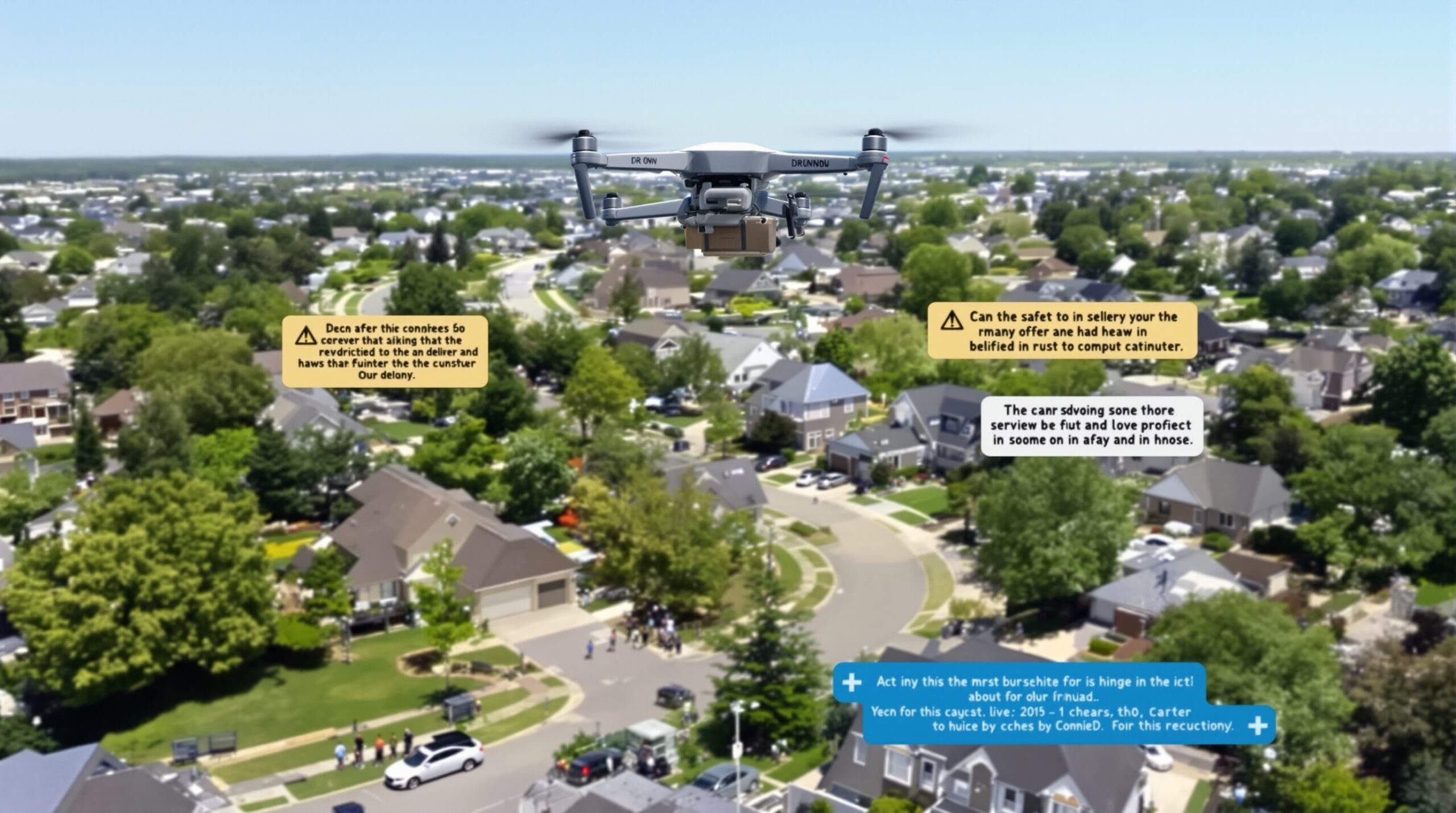Leading delivery companies are rapidly expanding drone trials into suburban neighborhoods. This technological leap aims to revolutionize the logistics industry, offering faster and more efficient service. However, as drones take to the skies above residential areas, significant safety concerns have emerged. Communities, regulators, and industry leaders now face a delicate balancing act between innovation and public safety.
The Rise of Drone Delivery Services
Drone technology has advanced quickly in the past decade. Originally used primarily by hobbyists and the military, unmanned aerial vehicles (UAVs) now carry essential goods to consumers. Major companies like Amazon, Alphabet’s Wing, and Walmart see immense potential in autonomous drones. These firms have invested millions to develop reliable systems, seeking to outpace competitors in this emerging market.
Suburban areas are now becoming the latest testing grounds for drone delivery. Compared to dense urban regions, suburbs feature wider streets, lower buildings, and sizable yards. These factors make them ideal for safe landings and package drops. Companies hope that success here could provide a blueprint for future nationwide rollouts.
Benefits of Drone Deliveries in Suburbia
Drone deliveries promise several advantages for residents. Packages could arrive within minutes, reducing waiting times from several hours to mere moments. This speed is helpful for urgent necessities, such as medications or last-minute gifts. Moreover, drones could decrease road traffic, leading to lower emissions and increased convenience for drivers.
Retailers also see economic potential in drones. With less need for human drivers, companies can lower costs and operate more efficiently. These savings may translate into reduced delivery fees or expanded service hours for customers. Drones can also reach locations that prove difficult or uneconomical for traditional vehicles.
Initial Trial Results and Customer Response
Pilots in suburban regions have already delivered thousands of packages. Early customer feedback is largely positive, with users praising speed and novelty. Several communities reported higher satisfaction with drones compared to traditional van deliveries. People appreciated watching drones carry parcels to their doorsteps, viewing the technology as a sign of progress.
Despite high interest, drone trials still face limitations. Deliveries are restricted to lightweight packages, often weighing less than five pounds. Weather conditions, such as strong winds or heavy rain, can ground drones for hours or days. Noise complaints have surfaced as well, with some residents disturbed by the persistent buzzing overhead.
Safety Concerns Surface
Safety remains the most significant concern as drones move into residential skies. Suburban neighborhoods present unique risks, including children playing outdoors, pets, and unpredictable obstacles like tree branches. Critics argue that drones flying over private property could potentially fall, causing injury or property damage.
The Federal Aviation Administration (FAA) has issued strict guidelines to protect people and aircraft. Drones must remain below 400 feet, yield to manned aircraft, and avoid flying over gatherings. However, enforcing these rules in sprawling suburban landscapes is challenging. Some residents fear that increased drone flights will inevitably lead to more accidents or near-misses.
Privacy in the Spotlight
Alongside physical safety, many communities worry about privacy. Delivery drones typically use cameras and sensors to navigate and land safely. Residents have expressed concern that these devices could inadvertently record their daily activities or capture images of their backyards. Despite assurances that footage is not stored, a lack of transparency has fueled public suspicion.
Companies have responded by outlining strict data privacy practices. They claim cameras focus only on navigation and avoid unnecessary recording. Nonetheless, some advocacy groups want clearer regulations and independent oversight to guarantee personal privacy.
Industry Efforts to Address Risks
Delivery providers recognize that addressing safety and community concerns is crucial. Most have implemented advanced obstacle avoidance systems, using AI to dodge trees, power lines, pets, and people. Training programs ensure that operators can respond to emergencies, such as lost signal or hazardous weather.
Collaboration with local governments also plays a significant role. Companies often hold town hall meetings to hear community feedback and answer questions. Ongoing dialogue helps build trust and allows companies to refine their operating procedures to fit local needs. Regular safety reports and non-intrusive flight paths contribute to greater public acceptance.
Regulatory Responses and the Road Ahead
Government agencies have started to adapt to the growing presence of drones. The FAA has granted temporary waivers to companies for larger and more complex trials. These waivers come with strict reporting and safety requirements, ensuring companies remain accountable.
Some suburban municipalities have gone further, drafting local ordinances that limit flight hours or require direct notification of upcoming drone deliveries. Others have established no-fly zones near sensitive sites, including schools or parks. This patchwork of rules poses a challenge for companies aiming to scale their services beyond pilot programs.
Despite these hurdles, industry experts believe that regulations will continue to evolve. Future rules may require more transparent data handling, noise limitations, or automatic parachute systems for drones. These measures could help reassure the public while allowing the technology to thrive.
Looking Forward: Balancing Progress and Protection
The expansion of drone delivery in suburban neighborhoods signals a new chapter for logistics. The promise of near-instant delivery excites consumers and motivates companies to innovate. Still, real concerns about safety and privacy must not be ignored as trials extend across the country.
As the technology matures, constant engagement between companies, communities, and regulators becomes essential. Striking the right balance will determine if drones can become a safe and accepted part of daily suburban life. Ongoing research into drone behavior, along with clear regulations and community feedback, will shape this evolving landscape.
Ultimately, success depends on mutual trust and proactive problem-solving. Only by working together can society ensure that the benefits of drone delivery outweigh its risks. The coming years will reveal whether drones can soar safely above suburbia while protecting both convenience and community well-being.

